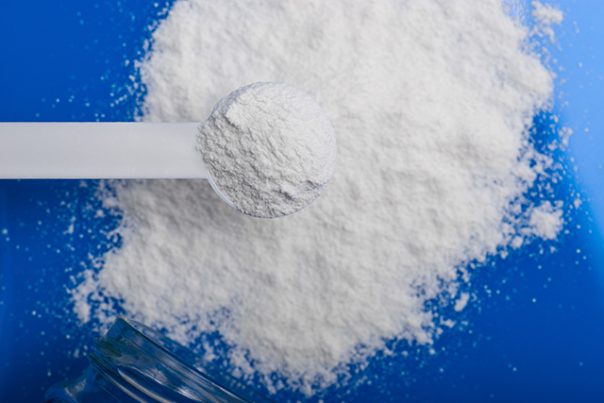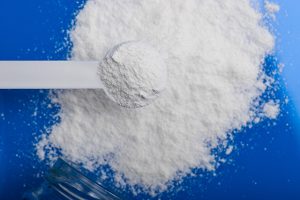
Sodium Laureth Sulfate — toxicity, side effects, diseases and environmental impacts
Saturday, November 11, 2017 by Michelle Simmons
http://www.naturalpedia.com/sodium-laureth-sulfate-toxicity-side-effects-diseases-and-environmental-impacts.html

Sodium laureth sulfate (SLES) is a surface-active agent or surfactant, which is partly soluble in water and is partly soluble in oil. This chemical is used as an emulsifier and foaming agent in commonly used cosmetic and industrial cleaning products. It is an additive that enables cleansing products to foam. Sodium laureth sulfate is an opaque, thick liquid and its consistency depends on the concentration level. It gives a thick rich foam and cleanses the hair. Its thorough action dissolves dirt and grease.
Other names for sodium laureth sulfate include: alpha-sulfo-omega- (dodecyloxy) poly (oxy-1,2-ethanediyl), sodium salt; dodecyl sodium sulfate; peg- (1-4) lauryl ether sulfate, sodium salt; poly (oxy-1,2-ethanediyl), polyethylene glycol (1-4) lauryl ether sulfate, sodium salt; polyoxyethylene (1-4) lauryl ether sulfate, sodium salt; sodium peg lauryl ether sulfate; sodium polyoxyethylene lauryl ether sulfate; and sodium polyoxyethylene lauryl sulfate.

List of known side effects
According to an article posted in LiveStrong.com, undiluted sodium laureth sulfate can cause skin and eye irritation. The chemical can also cause nausea, vomiting, and diarrhea if ingested. Use of products with sodium laureth sulfate should be avoided because the chemical has been found to be contaminated with measurable amounts of ethylene oxide, a known human carcinogen, and 1,4-dioxine, a possible human carcinogen, according to an entry by DavidSuzuki.org.
Since sodium laureth sulfate can be contaminated with 1,4-dioxine it can cause harmful effects in the environment. The possible carcinogen 1,4-dioxine does not easily degrade and can stay in the environment for a long time even if it is washed down the drain. Thus, it can also be toxic to aquatic animals.
Body systems affected by sodium laureth sulfate
There are a few body systems that can be affected by sodium laureth sulfate. The chemical can adversely affect the integumentary system by causing irritation on the skin. Sodiun laureth sulfate can also negatively affect the ocular system as it can cause irritation on the eye/s when in contact. In addition, if the chemical is inhaled, it can lead to irritation in the respiratory system, particularly the lungs.
Items that can contain sodium laureth sulfate
According to an entry by Natural-Health-Information-Centre.com, sodium laureth sulfate is present in commonly used personal hygiene products such as shampoos, soaps, bubble baths, toothpastes, body wash, shaving creams, mouthwashes, skin cleansers, moisturizers, and sun creams. The chemical can also be found in products such as dish soaps, laundry detergents, stain removers, carpet cleaners, fabric glue, and mascara.
How to avoid sodium laureth sulfate
To avoid sodium laureth sulfate, find soaps, shampoos, and other personal hygiene products that are labeled “SLS free.”Other ways to avoid this chemical is to use shampoos with essential oils or use baking soda to wash your hair.
Where to learn more
- Baby shampoo not safe as you think
- DIY Hair Gel Recipe
- Safe Alternative to Toxic Laundry Detergent
- Which Toothpaste Do You Use? 5 Reasons to Start Using Coconut Oil as Toothpaste
- Top 10 Soap Additives that Can Damage the Skin
Summary
Sodium laureth sulfate (SLES) is a surfactant that allows water and oil to be dispersed. This chemical is used as an emulsifier and foaming agent in most personal care and cleaning products.
Sodium laureth sulfate can cause skin and eye irritations.
Sodium laureth sulfate can cause nausea, vomiting, diarrhea, if ingested.
Sodium laureth sulfate can possibly cause cancer.
Sodium laureth sulfate does not easily degrade and stays in the environment for a long time. When washed down the drain, it can also be toxic to aquatic animals.
Sodium laureth sulfate affects the integumentary, ocular, and respiratory systems.
Sources include:
Tagged Under: Tags: Sodium laureth sulfate





